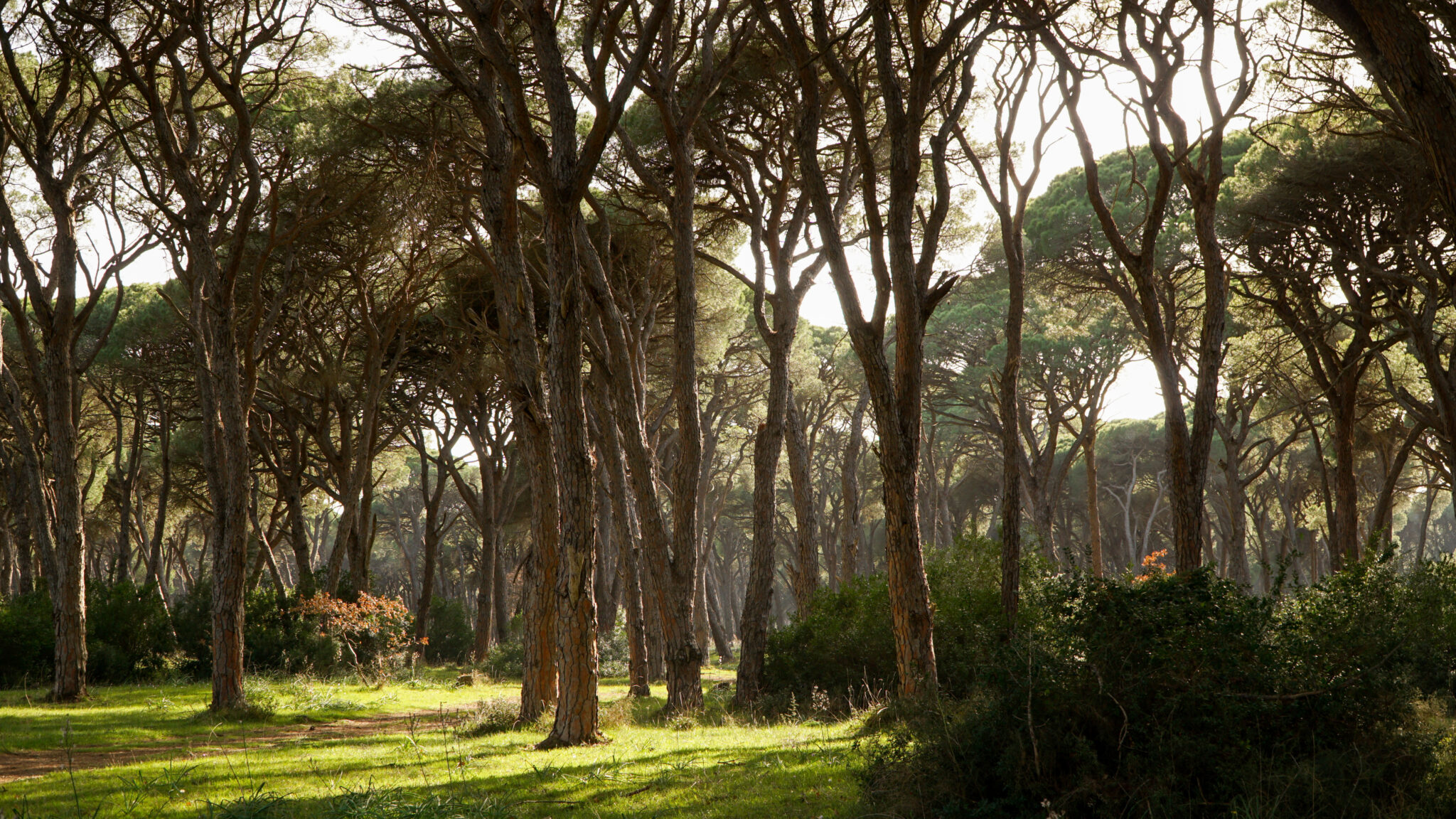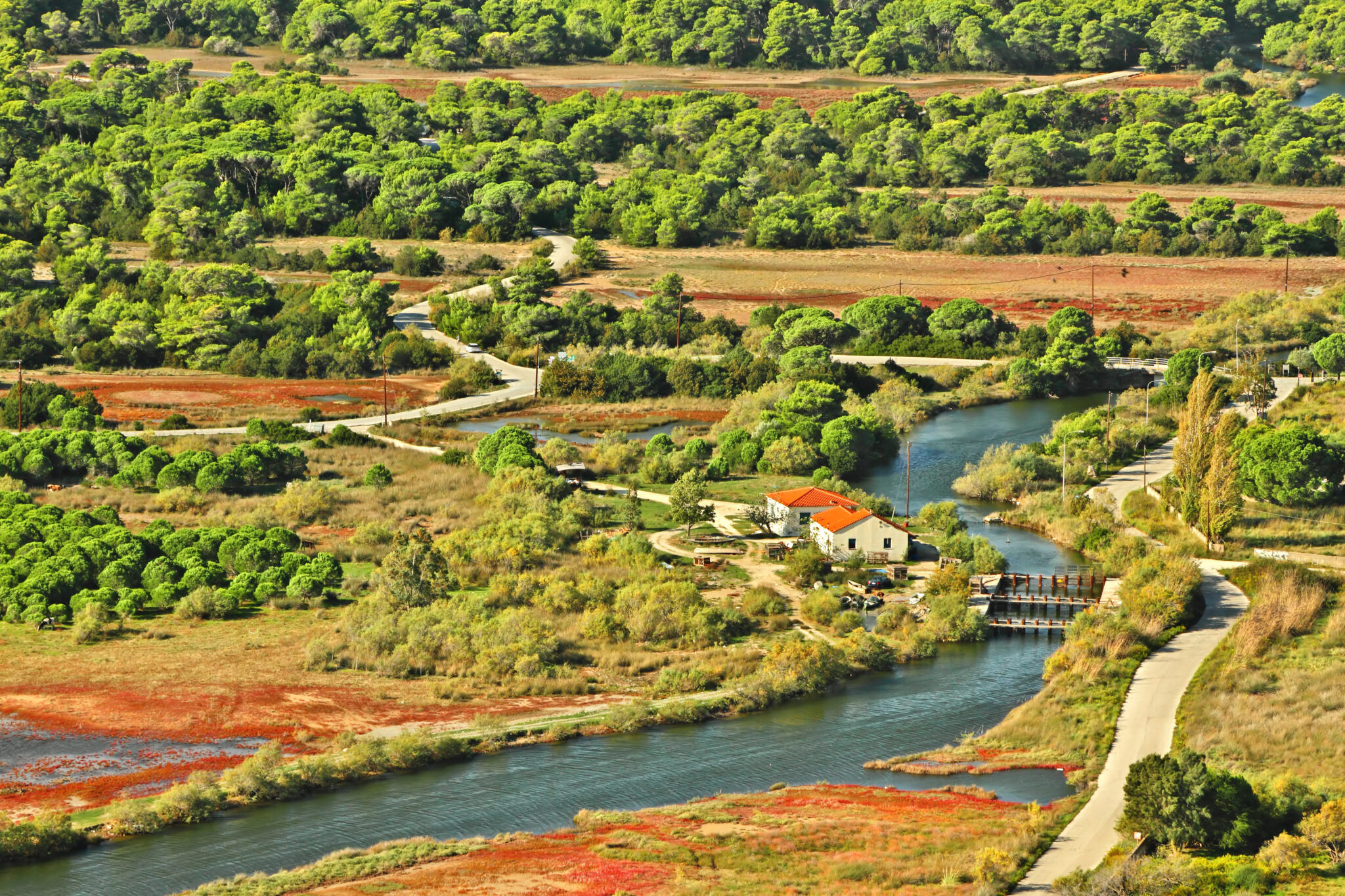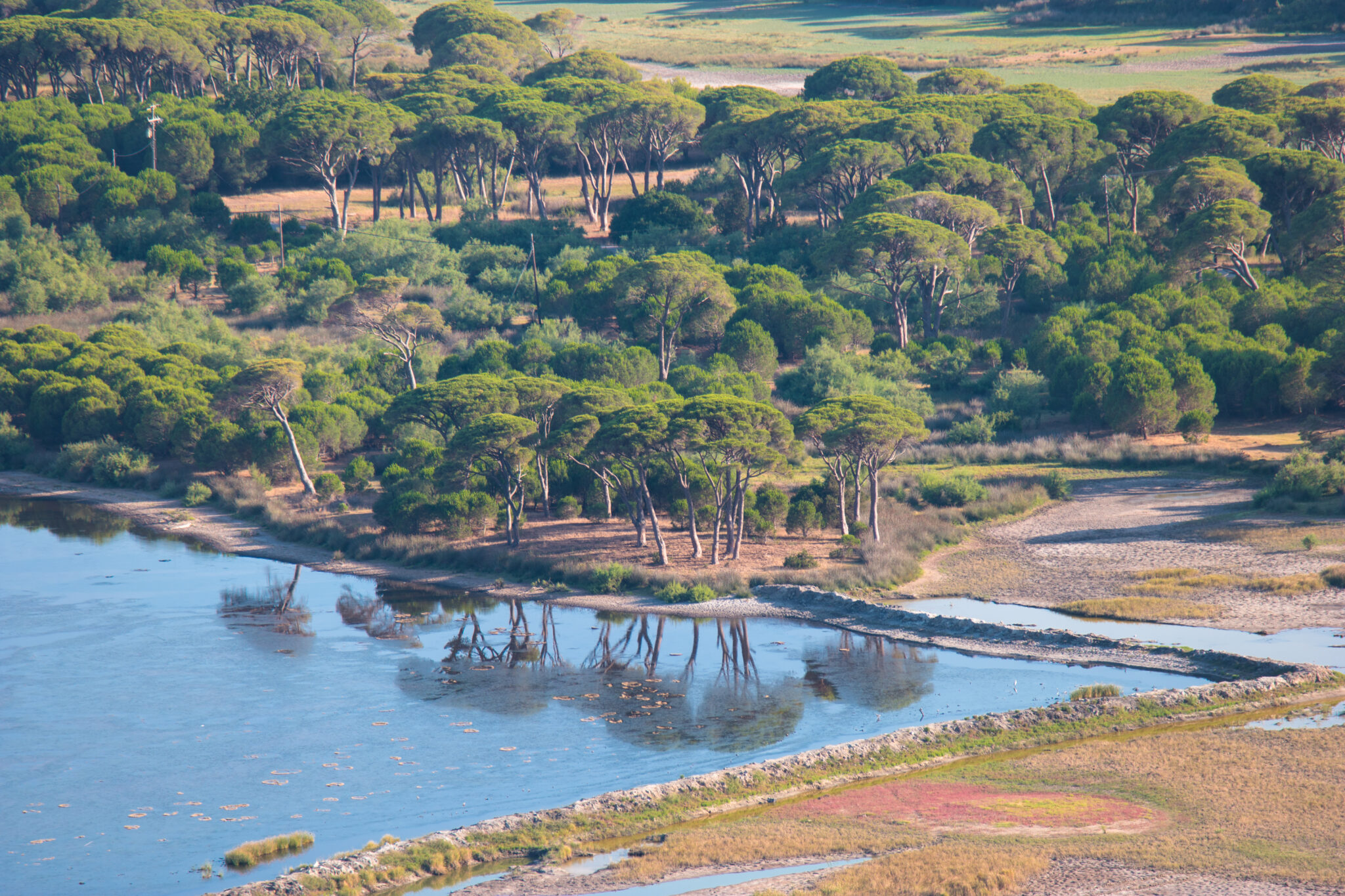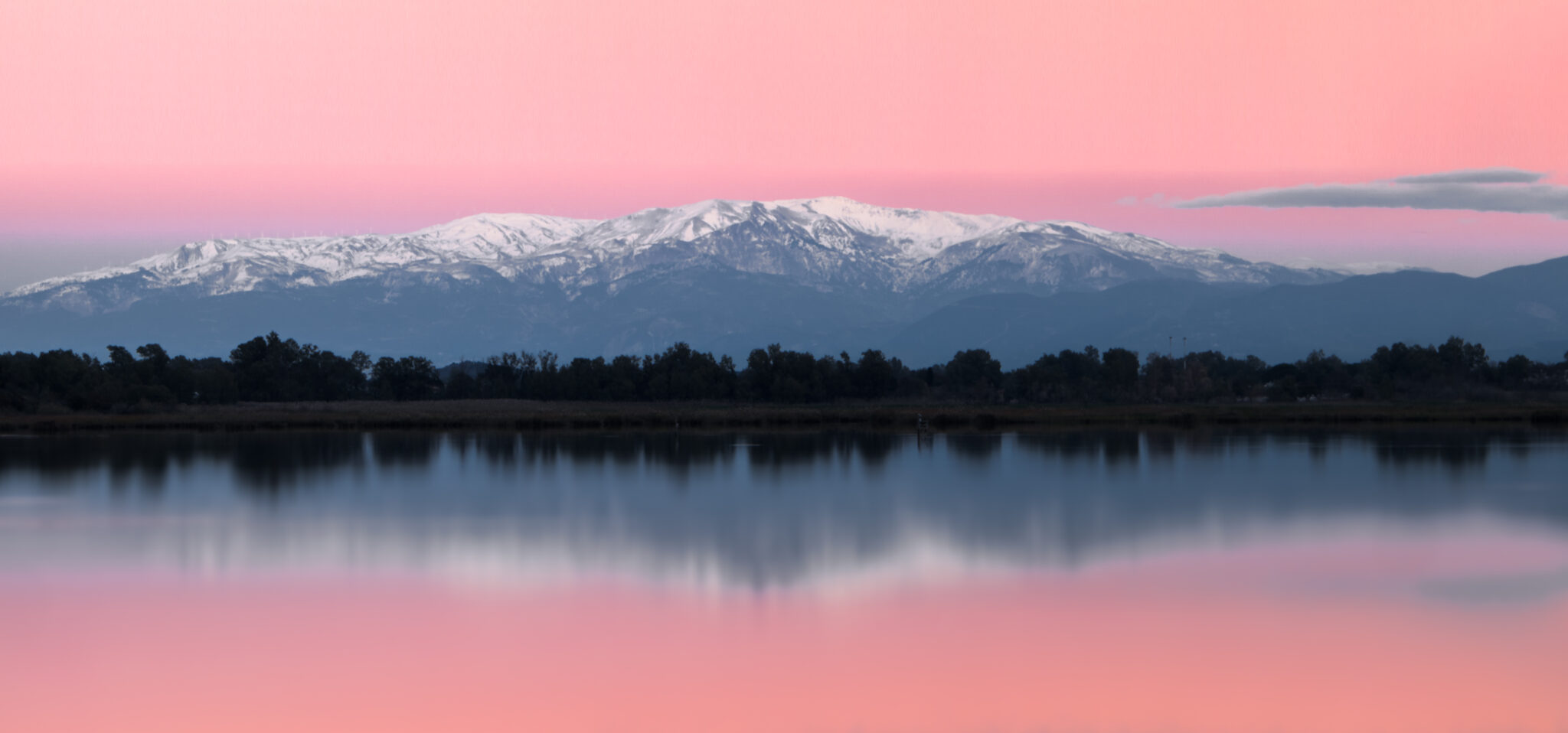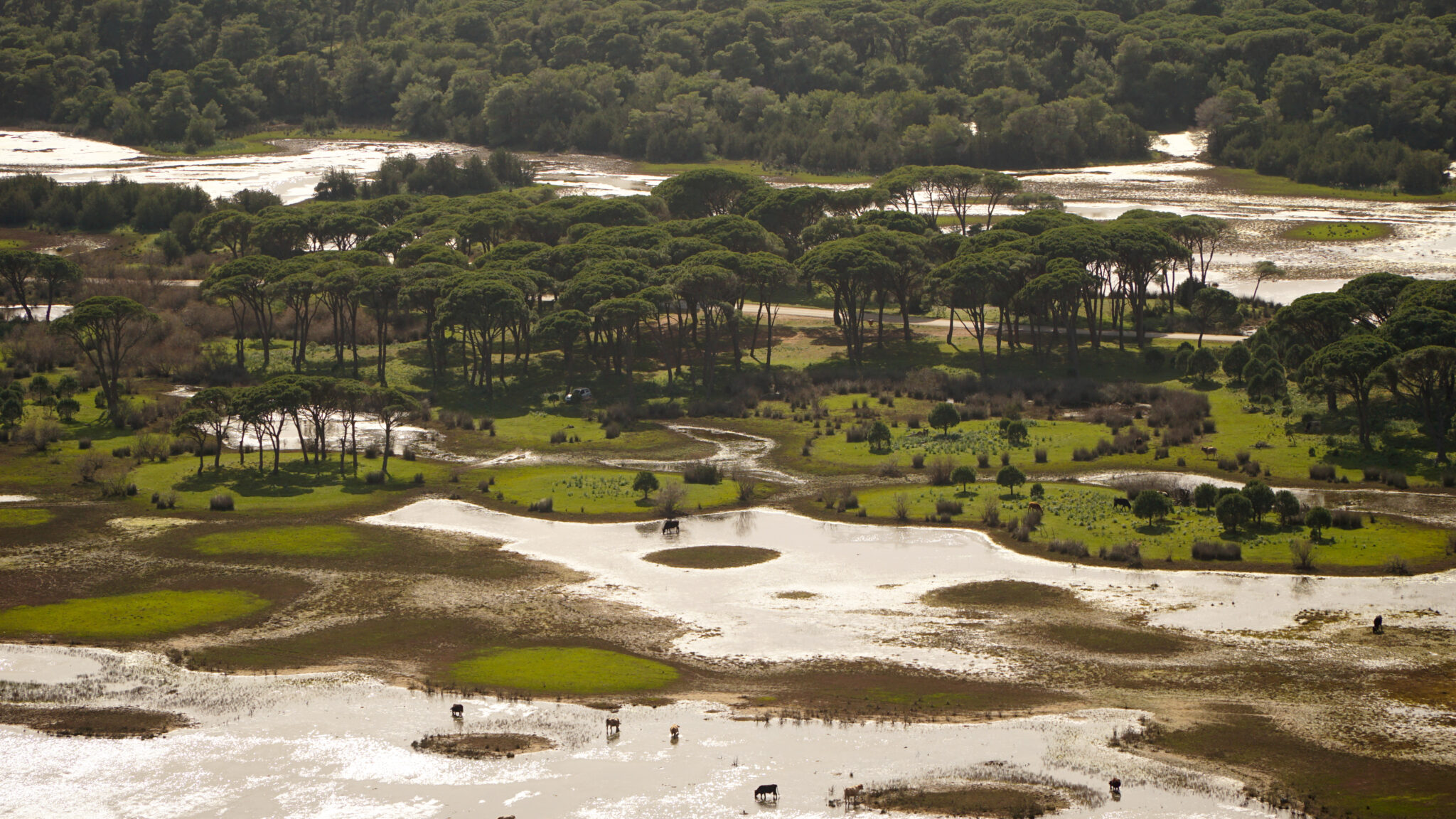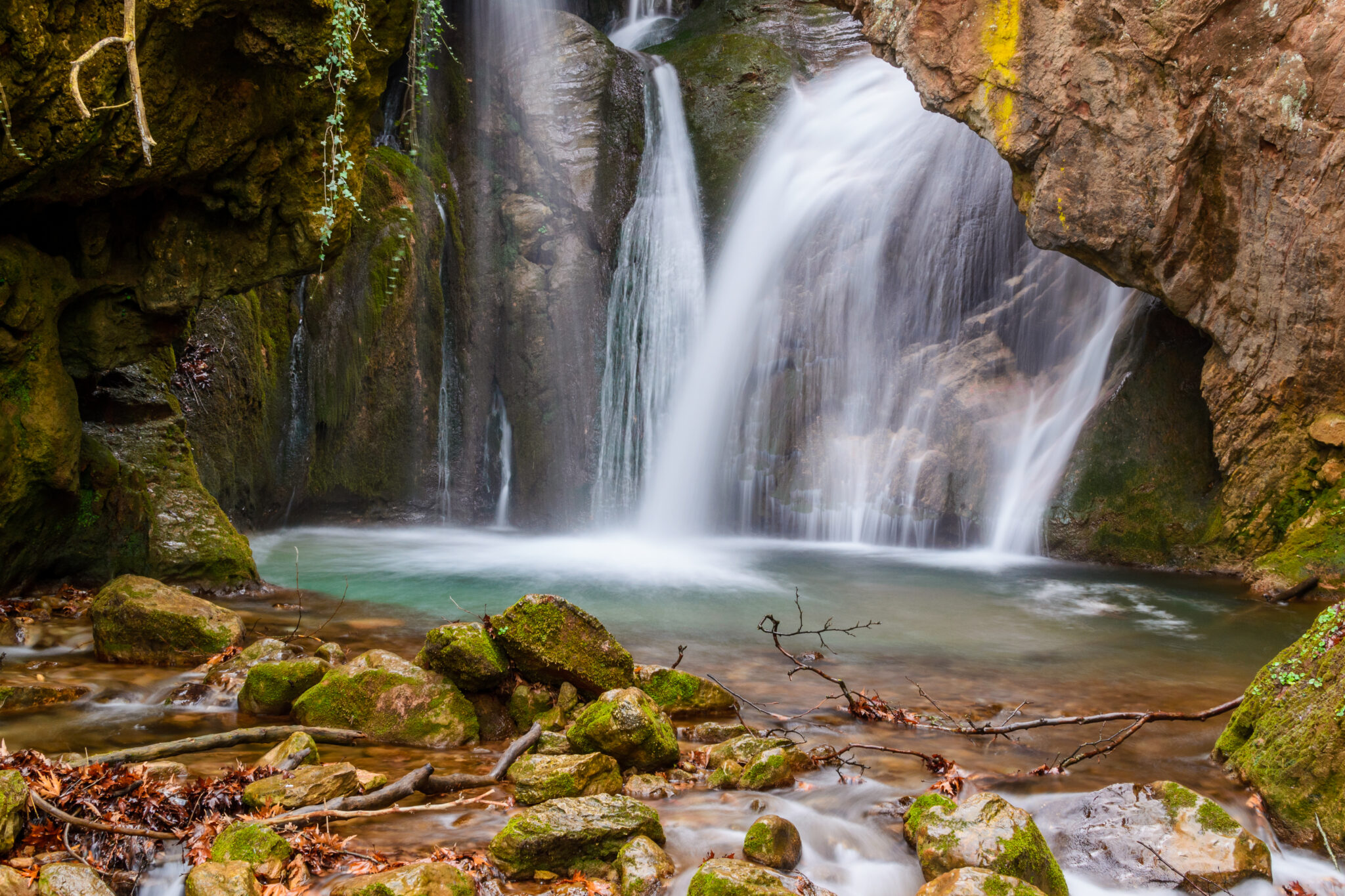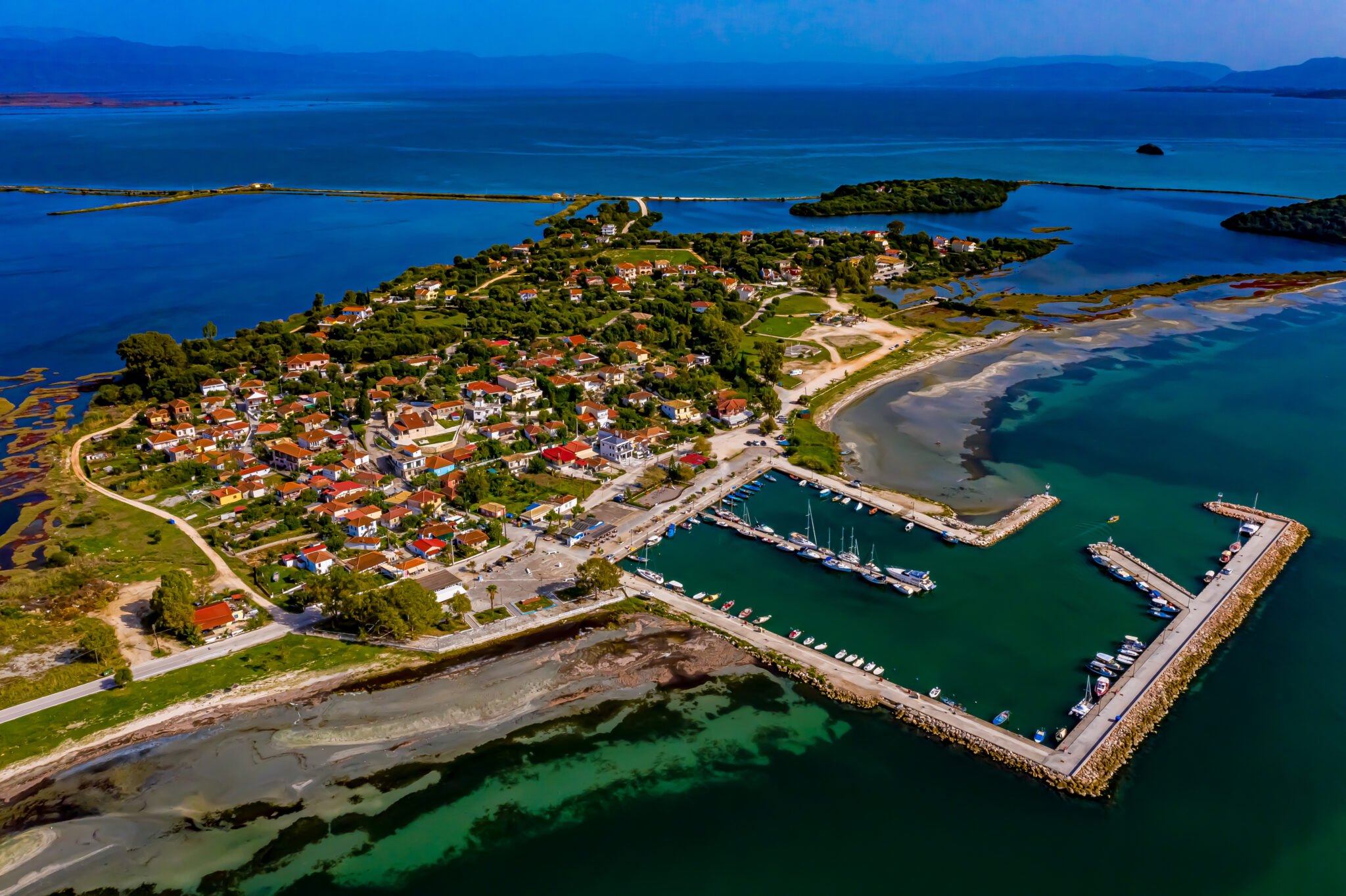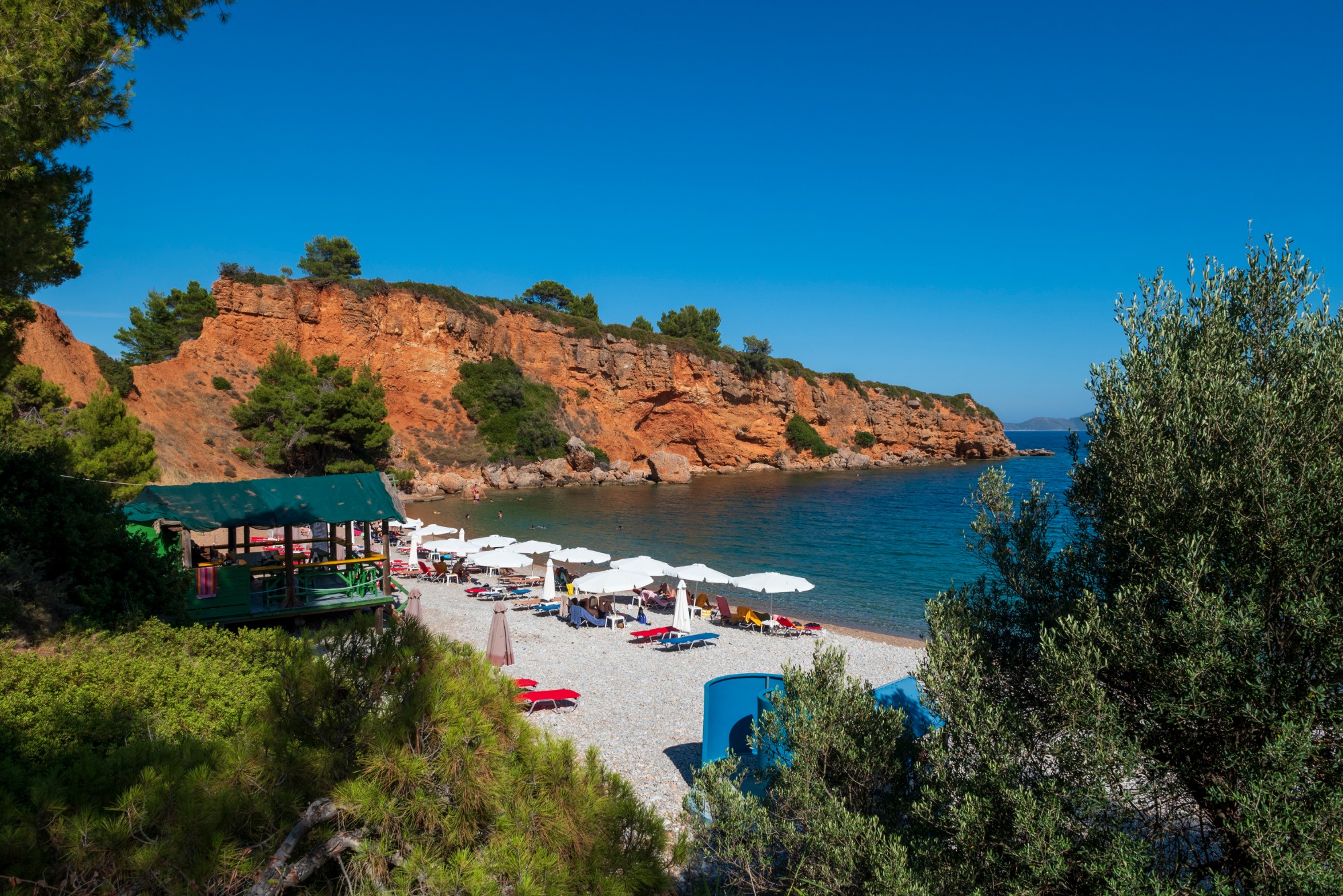Somewhere in Achaia, on the beach of Kalogria, 45 km from Patras, there is an ecological paradise. It’s the forest of Strofylia, the largest stone pine forest in Greece, an extended coastal forest strip of an average width of 1.250 m. From above the sight is impressive: a green line of trees interspersed by clearings and water basins and canals, both natural and artificial. The variety of the water formations here is the reason the forest’s rare and biodiverse ecosystem has developed.
At this forest, one of the largest of its kind in Europe, three kinds of trees flourish: the stone pine, the Aleppo pine and the Valonian oak. The trees that are closer to the sea, mostly the Aleppo pines, create a strange site as they stand on the sandy beach. Further inlands, behind the trees growing by the sea, there are 100- and 200-year-old stone pines. The Aleppo pines protect the stone pines from the wind and salt. The forest also has almond-leaved pears, kermes oaks, ash trees and turpentine trees.
The forest of Strofylia is not alone on this small peninsula of the Peloponnese. Together with the lake Prokopos and the Kotychi lagoon they compose a wonderful natural environment, a complex of lakes, lagoons, marshes and forests. It is the Kotychi – Strofylia Wetlands National Park, whose total area is 2.200 ha, and which is of a tremendous environmental value, and so, is protected under the Ramsar Convention and belongs to the Natura 2000 network.
Apart from the rich flora, the park also is known for its fauna, as it is a wildlife reserve. There are tortoises, foxes, weasels, tree mice, while the dead tree timber consists a good environment for a variety of insects and mushrooms. Kotychi is on the west migration route and, so, many migratory birds stop there. If you like birdwatching you’ll enjoy seeing egrets, hoopoes, turtle doves, glossy ibises and swallows, using binoculars or a telescope.
Strofylia apart from being a beautiful place of ecological importance, is also a hiking and cycling destination. Nature and outdoors activities lovers can walk throughout the park, among the trees, the running waters and the sand dunes. The ground is even and easily accessible. At the same time, the 2.200 ha are cyclist friendly, as cyclists can use the forest roads to cross the park. There are in total eight marked hiking trails and four cycling trails, all of them of low to moderate difficulty.
Apart from all the above, this region is ideal for taking photos, either of the natural landscape or of wild animals. And, of course, let’s not forget that you can also swim in the Ionian Sea and relax on a 15 km sandy beach.



